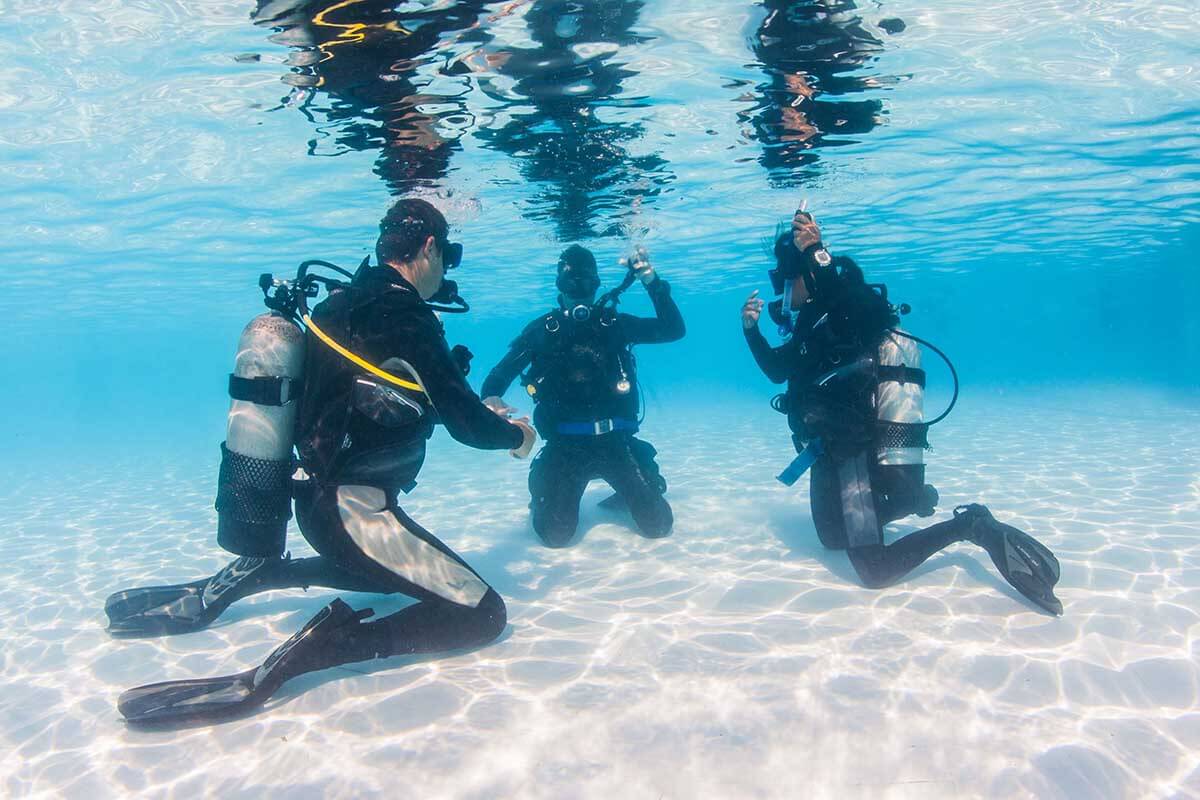
‘Is scuba diving safe?’ is one of the questions most asked by prospective dive students. And the answer is yes, when conducted with suitable training, using safe diving practices in conditions appropriate to that training, scuba diving is a very safe activity indeed.
It is important to be up-front and honest, however, about the risks that scuba diving does entail. Even simple, everyday activities such as crossing the road or driving a car become extraordinarily dangerous if proper attention is not paid to basic safety principles, and while diving is not particularly complicated, it carries the additional risk of taking place in an environment in which we cannot survive unaided.
To put the level of risk into perspective, a 2010 workshop conducted by the Diver’s Alert Network (DAN) showed that in the USA, annual fatality rates associated with scuba diving averaged 16.4 deaths per 100,000 divers – a figure similar to those associated with driving a vehicle (16 per 100,000 people), and only marginally more than the average number of deaths that occur while jogging (13 per 100,000 people)
Statistics provided by PADI during the workshop relating specifically to training incidents showed that out of 63 million student dives conducted between 1989 and 2008, the mean per capita death rate was 1.7 deaths per 100,000 student divers per year.
The idea that scuba diving carries no more risk that driving a car (and not much more than jogging) should be reassuring to those considering learning to dive. Although the mainstream media sometimes bombards us with the worst of the stories, it is worth remembering that for every accident that makes the headlines, millions of other people get in their cars – or go scuba diving – every day, without incident.
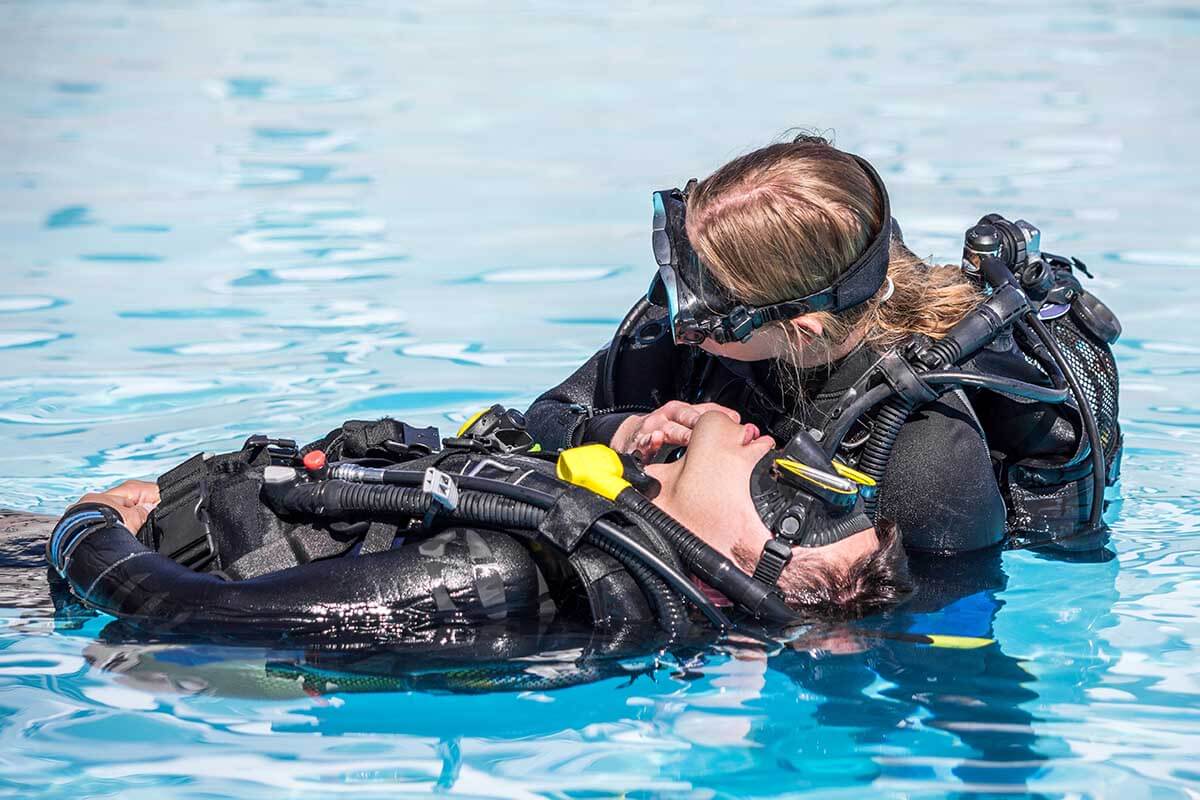
Scuba diving medical safety
Scuba diving safety starts before training even begins, with an obligatory medical questionnaire (available for download here) that all training agencies require all student divers to complete before participating in a scuba diving course. Some countries mandate that divers receive clearance from a qualified physician before starting, although this is not a universal requirement.
It is thought that the leading cause of fatalities in scuba divers are pre-existing medical conditions, primarily some form of cardiovascular disease. Common cardiovascular conditions such as hypertension (high blood pressure) often go unnoticed at the surface, but may prove fatal underwater.
While diving accidents caused by medical problems remain rare, it is imperative that all divers are honest about their health. You do not need to be an Olympic athlete, but if you have a pre-existing medical condition, scuba diving safety begins with understanding how it may affect you underwater, and seeking medical clearance to dive from an approved physician, if necessary.
Training programme safety
Internet ‘experts’ often – and loudly – proclaim that certain types of training programmes are dangerous, because all the big agencies care about is money. One might cynically – but truthfully – respond, however, that scuba diving fatalities are not good for business. Speaking directly from personal experience, I can assure you – they all care about dive safety.
Let’s be brutally honest here: there are bad instructors, and there are bad operators. The same is true of any profession, as is the fact that such people are a very small minority. Thanks to the growth of social media over the last 15 years, however, the presence of ‘cowboy’ operators continues to wane.
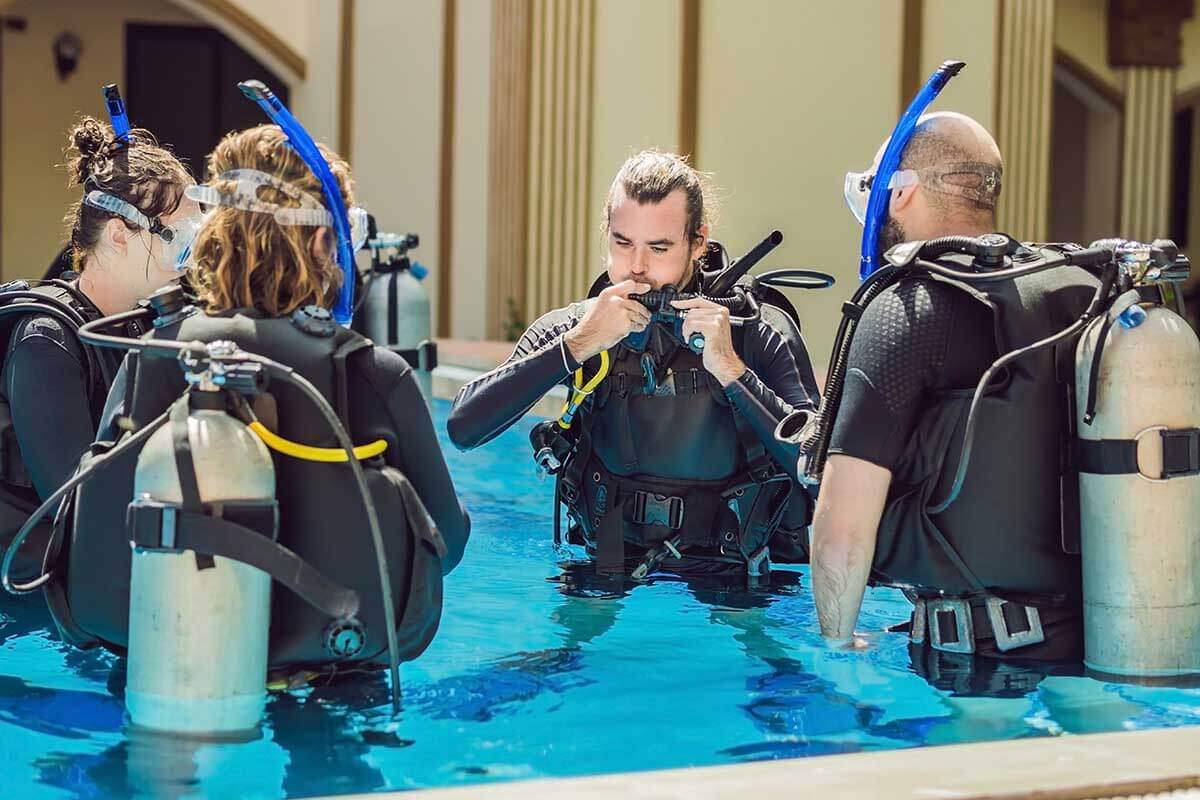
For the majority of reputable operators, however, the standards behind the training programmes they conduct have been developed and refined over more than fifty years of continuous use, based on scientific and medical research and the combined experience of millions of certified divers and dive professionals.
Once training begins, the fundamentals of safe diving practices are made paramount right from the start, reducing the risk of injury from the inevitable wobbles that most dive students will go through: never hold your breath; equalise early and often; always ascend slowly; never tickle the stonefish – and dive within your limits.
Skills are taught under the watchful eye of an instructor and repeatedly reinforced through a series of exercises that progress from very safe and very shallow water, and only move to deeper water once a student has demonstrated they are capable of using their equipment and dealing with common problems without having to head for the surface.

The Buddy System
The buddy system is a safety protocol used in many activities that involve some form of risk. It is taught during all entry-level diver training programs and is adhered to during almost all recreational diving. It means that you are paired with another diver and therefore there are two people to check that everything works and look out for each other underwater.
As a recreational diver, especially in the typical holiday resort environment, it’s highly likely that you will learn to dive with people you have never met before. Some Internet-based keyboard experts suggest the buddy system is therefore dangerous, because you can’t trust strangers. It is my experience, however, that people who don’t know each other are usually quite diligent about looking out for their dive buddy – perhaps even a little more so than familiar friends.
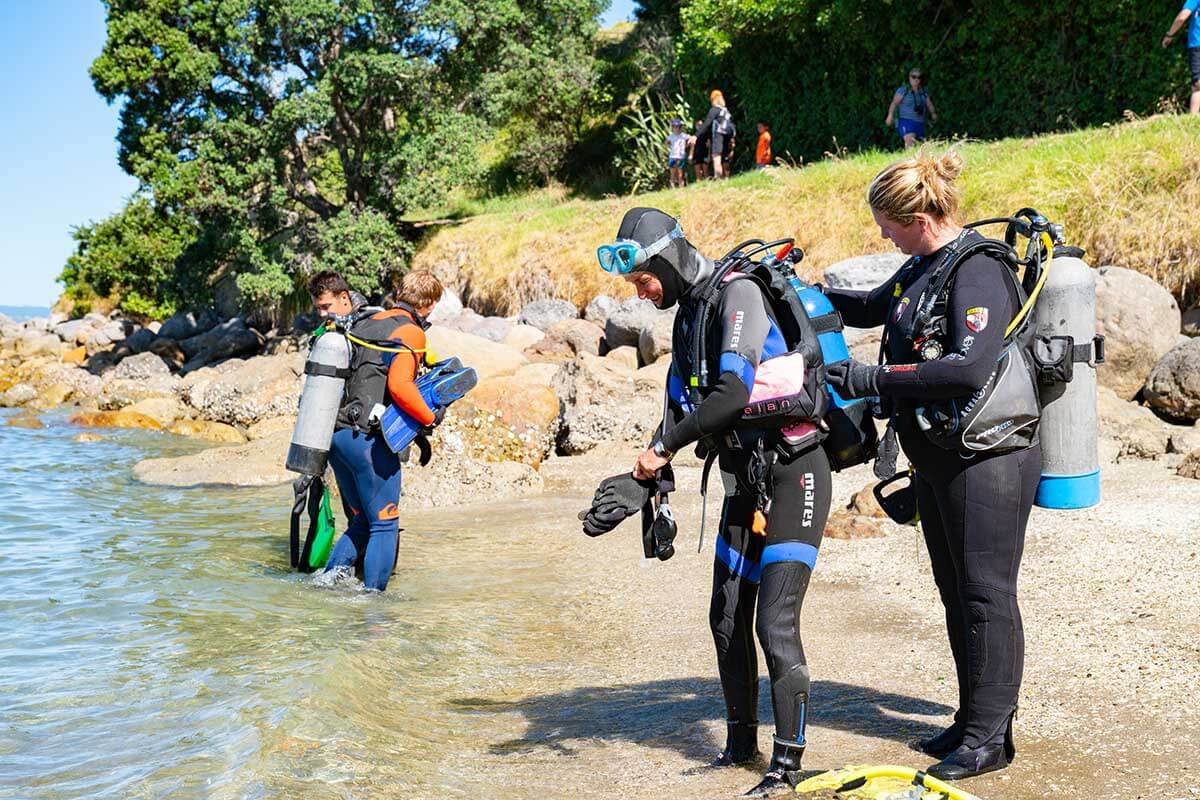
Diving in a group is reassuring and has significant benefits to overall safety. Every other diver in the team, even if you don’t know them, is another pair of eyes to spot potential problems and provide an alternative source of air in an emergency if necessary.
The group dynamic allows people to share ideas and discuss solutions, even giving some people the confidence to raise an issue with the instructor that they otherwise would not have felt comfortable broaching. Apart from anything else, it’s a great way to celebrate certification at the end of the course, and share stories about what you’ve seen and experienced.
Dive equipment safety
In today’s recreational scuba diving world, there really is no such thing as ‘unsafe’ diving equipment, as long as it is well maintained, used correctly, and you are well instructed in its operation.
We make pre-dive checks before entering the water, every time we dive, to ensure that we have enough air in our tank, that the regulator system from which we breath delivers it, and that the jacket we wear to control our buoyancy underwater and remain afloat at the surface operates correctly.
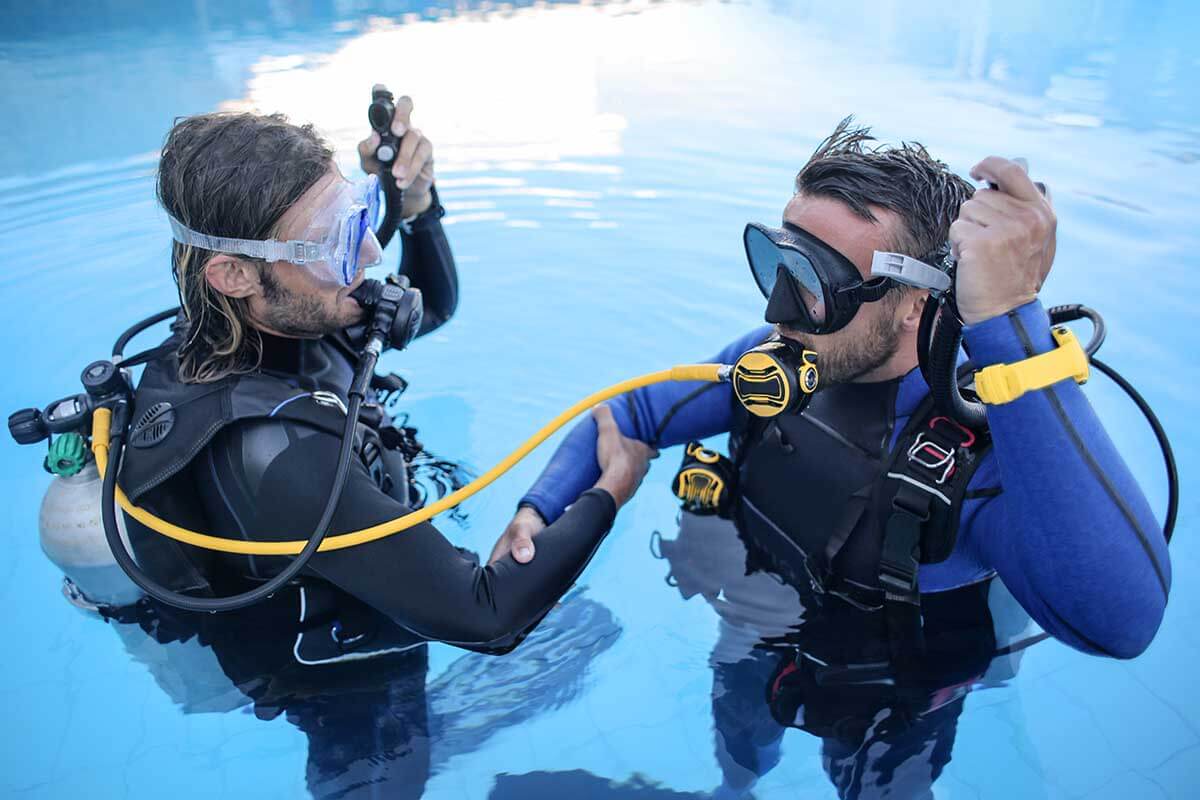
Failure to perform these checks is one of the most common cause of scuba diving accidents, but during training your gear will be checked by you, your buddy, and your instructor every time you are about to enter the water, minimising the risk of equipment-related problems.
Equipment failure is rare, but during training we learn to deal with problems that might arise from either broken equipment, or failure to properly check its operation before diving – often with the help of our buddy.
There are still operators out using poorly maintained gear, but thanks once more to the power of social media, it becomes less easy for them to continue to get away with it.
Know your limits
Just as passing a driving test for a car does not grant you the right to exceed the speed limit, drive large trucks, or ignore poor weather conditions, passing your entry level diving course does not entitle you to dive in deep water with strong currents and bad visibility.
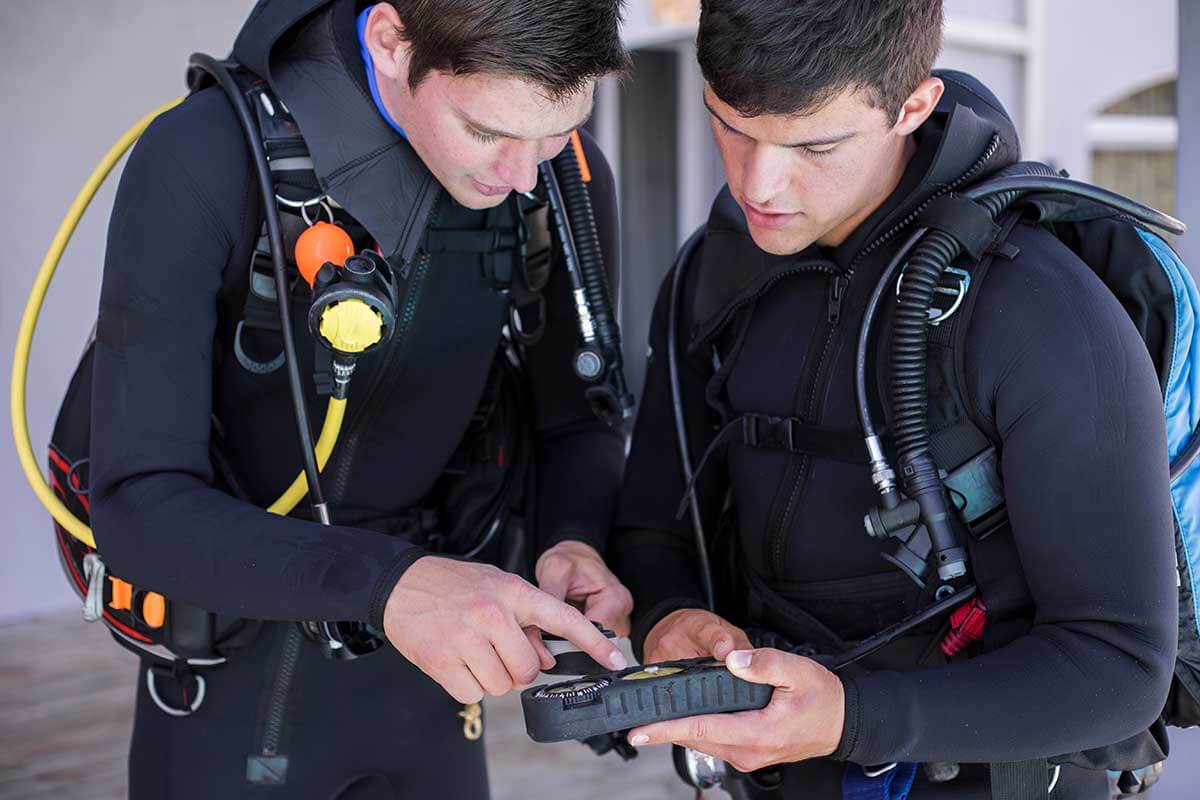
Exceeding the limits of your training is a notable cause of scuba diving accidents. It is a notable cause of accidents in many recreational activities. Just as it takes more than being a keen walker to attempt the Appalachian Trail, having an entry-level dive certification does not mean you should head off to the remote pinnacles and raging currents of Cocos Island.
An Open Water dive course is not a training programme to be the world champion of scuba diving – it is learning the basic principles of a safe, enjoyable underwater pastime, from which newly certified divers may progress through experience and further education to explore new challenges and new environments.
So, is scuba diving safe?
While there is always some risk associated with scuba diving, properly conducted entry-level training programmes go a long way to minimising that risk through the solid application of safe diving practices and education.
Whichever route you take into the scuba diving world, there are many courses available from a raft of different agencies to improve your diving and understanding of the underwater world. Some are essential training courses that will improve your dive skills and teach you how to deal with more challenging conditions, others merely an enjoyable way to learn new things. Safely.


